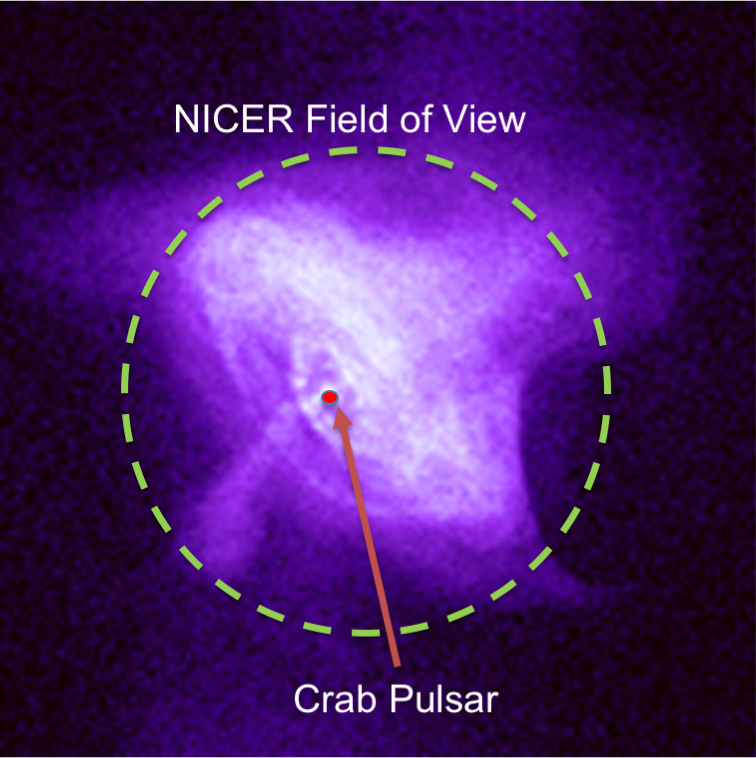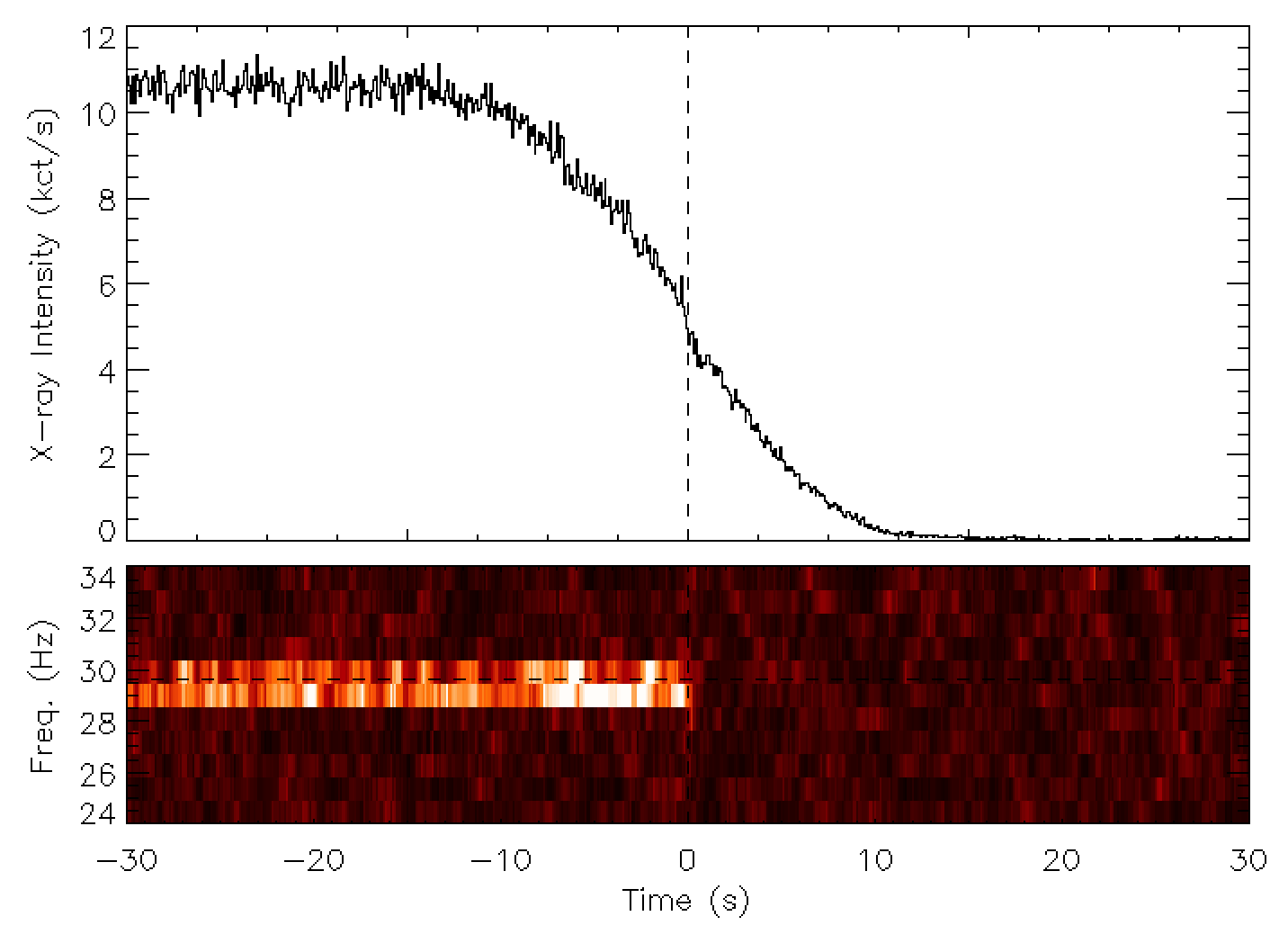NICER / ISS Science Nugget
for April 2, 2020
NICER watches as the Moon blocks the Crab pulsar
On March 31st, NICER executed an observation of the Crab Nebula and
Pulsar just as the Moon occulted them. The Crab (Figure 1) is one of
the brightest X-ray sources in the sky. Located in the constellation
Taurus, it is the remnant of a supernova that was observed on the Earth
in the year 1054. It consists of a wispy nebula about 3 arcminutes
across and a compact unresolved neutron star at its center. The neutron
star pulses (rotates) with a period of about 33 msec. Opportunities to
observe lunar occultations of the Crab occur in seasons only every 8-9
years. As the ISS orbits the Earth, the Moon's parallax swings it
across the Crab. Predicting these occultations is an exercise in
precision celestial mechanics.

Figure 1:
The image of the Crab by NASA's Chandra X-ray observatory reveals fine
detail of the Crab that NICER’s field of view and angular resolution
cannot resolve. The structure includes a nebula that extends about 3
arcminutes across with a pulsar located near the center.
These occultations offer an opportunity to highly resolve in one
dimension the nebula/pulsar system. In addition, the Crab is a standard
calibration source for NICER. These observations allow us to understand
the structure of the nebula and to disentangle the pulsar emission from
the diffuse emission of the nebula.
In Figure 2, we show NICER data of this occultation. The extent of the
Crab and the rate of the parallax motion of the Moon yield a transition
that lasts about 20 seconds. As the Moon crosses the central pulsar,
which represents approximately 10% of the Crab's total brightness, there
is a sudden drop in the observed flux. NICER can also detect the pulses
of the Crab pulsar. In the same data set, we see the pulses disappear
as the Moon occults it. In Figure 2, the power density spectrum showing
the Crab pulses appears to brighten as the Moon's limb gets closer to
occulting it. This is because the Moon has already blocked much of the
nebular background by the time it occults the pulsar itself.

Figure 2:
Top Panel: The measured X-ray intensity by NICER of the Crab during the
occultation reveals a transition which is about 20 seconds long. Near
the center of this transition (dashed line) the Crab pulsar is blocked
as indicated by a sudden drop in flux. Bottom Panel: The power density
spectrum (PDS) measured by NICER reveals the pulses of the Crab at about
30 Hz. As the pulsar gets blocked, we see the pulse signal disappear.
In about 1 month, NICER will attempt a second observation of a Crab/Moon
occultation.
<< Previous
Main Index
Next >>